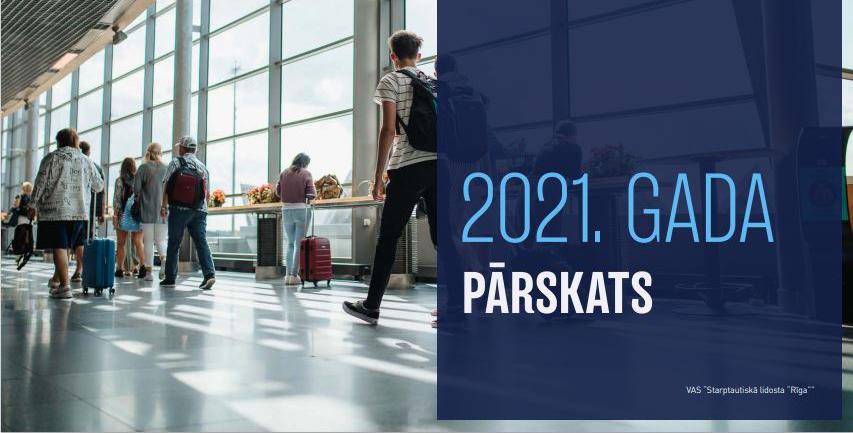
With the continued impact of the Covid-19 pandemic, Riga International Airport closed 2021 with losses amounting to EUR 9.4 million representing 10 million euro below the amount planned in the last year's budget, shows the Airport's audited annual report for 2021. The planned loss was reduced mainly due to higher turnover in both aviation and non-aviation revenue positions and targeted cost reductions.
The Airport's net turnover last year was EUR 31.77 million representing 12% over the originally budgeted amount, but only half of the turnover in 2019, i.e., nearly EUR 65 million. More than half of the revenue, EUR 18.9 million, was generated by aviation services, which is an increase of 8% as compared to the planned budget. This increase under conditions of reduced number of flights and passengers was mainly achieved because of a relatively small decrease in the direct passenger segment, which provides the Airport with significantly higher revenue than service of transit passengers, as well as higher-than-expected revenue was generated from the growth in cargo flights, opening of the Ryanair base and other factors. In turn, revenue from non-aviation services amounted to EUR 12.9 million or 20% above the budgeted amount.
Last year, the Airport invested EUR 6.7 million, including in the development of power supply, passenger and aircraft handling, aerodrome, and Airport territorial infrastructure, which will be particularly important as the aviation industry recovers from the impact of the pandemic.
“Although the Airport was unable to meet its objectives related to the number of served passengers and flights under the difficult-to-predict global pandemic conditions, our economic performance has been better than expected, Airport's turnover was 12% higher and the loss 52% lower than the forecast. The year of 2021 showed our ability to adapt to the changing situation by swiftly reviewing and organising our daily work processes, employee and financial resources both in the first half of the year, when the Airport was operating in the survival mode, and in the second half of the year, when numbers of passengers rose sharply again after the lifting of travel restrictions and the introduction of the EU Digital Travel Certificate. This has also required the ability to analyse long-term development forecasts in the sector and the corresponding Airport service and infrastructure development projects", says Laila Odiņa, Chairperson of the Board of Riga International Airport.
Last year, Riga Airport maintained its leading position among the airports of the Baltic capitals, serving 38 % of the total number of passengers (21 % in Tallinn, 31 % in Vilnius), 39 % of flights (27 % in Tallinn, 25 % in Vilnius) and 47.5 % of total cargo (Vilnius 26 %, Tallinn 18 %).
In 2021, the Airport continued to finance its economic activities partly with State aid – EUR 35.2 million increase in the Airport's share capital and exemption from the dividend payment for the financial year 2019 in the amount of EUR 4.5 million. These funds were received in June 2021.
In 2021, Riga International Airport handled
- 2.35 million passengers (+17% compared to 2020 / -70% compared to 2019),
- 39 000 flights (+10% compared to 2020 / -55% compared to 2019),
- 27.8 thousand tonnes of air cargo (+20% compared to / +2% compared to 2019).
Annual report : https://www.riga-airport.com/par-lidostu/finanses/gada-parskats
Riga Airport is a fast-growing Northern European air traffic hub, connecting the Baltic countries with European business centres and popular holiday destinations. Being aware of its role and responsibility in the national economy of Latvia, Riga Airport develops sustainable services and infrastructure, taking care of its employees and the environment, and keeping pace with society and the local community. By joining the Net Zero 2050 initiative, Riga Airport has committed to achieving climate neutrality by 2050.